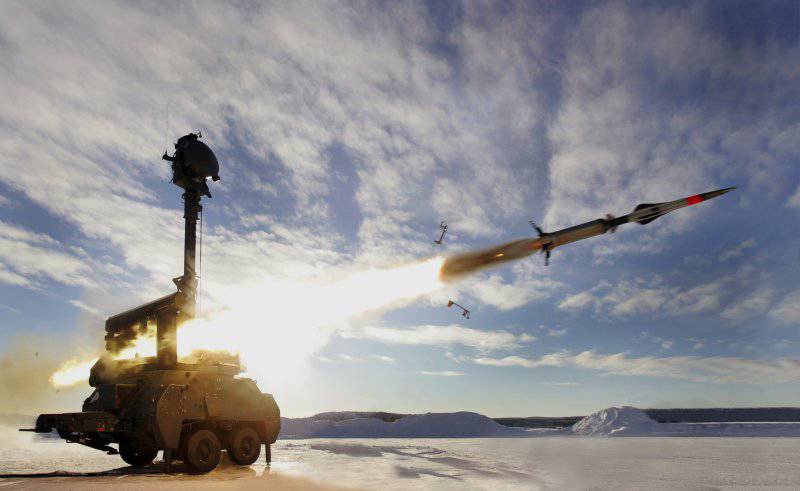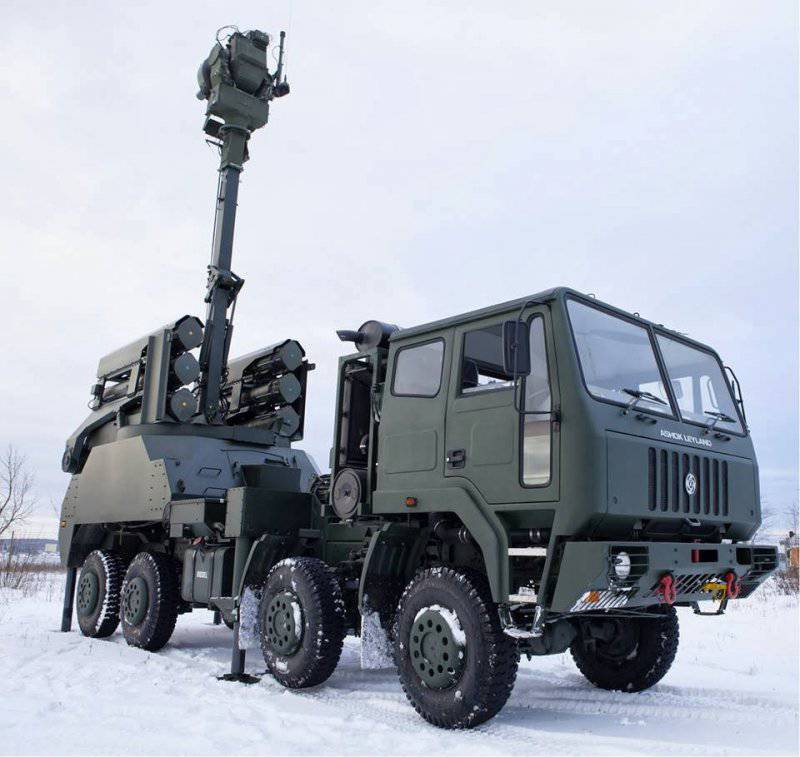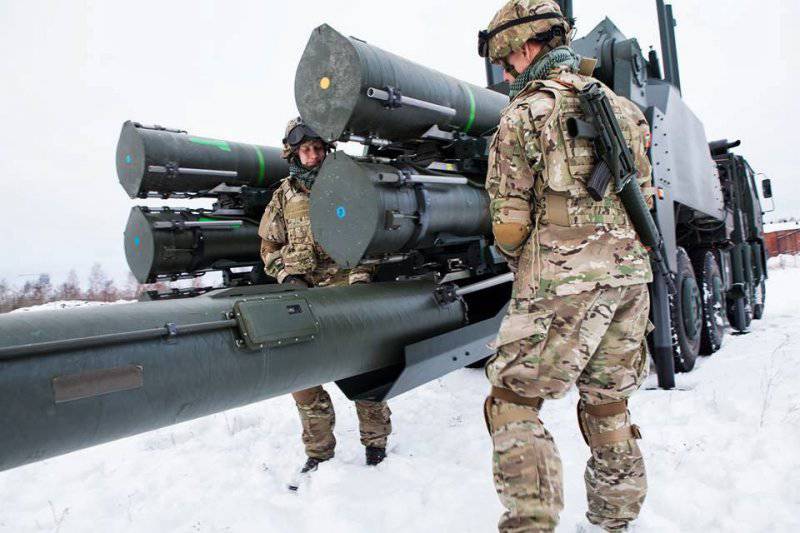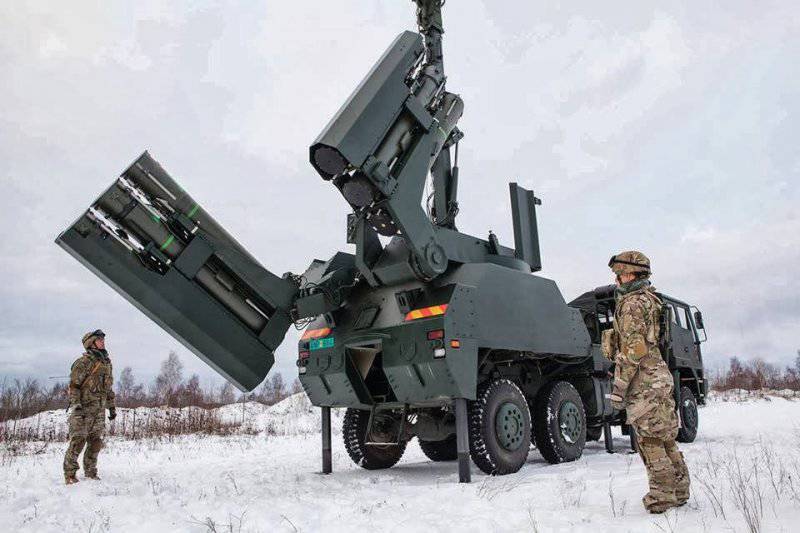Saab Group and Ashok Leyland have teamed up to offer the BAMSE anti-aircraft missile system for the Indian SRSAM program.
BAMSE rocket launch
It is no coincidence that the BAMSE SRSAM missile system from Saab was shown at the Defexpo 2014 exhibition in February of this year.
The Swedish defense company SAAB Group and the Indian auto giant Ashok Leyland have joined forces to participate in the competition of the Indian army on the air defense program SRSAM (Short Range Surface to Air Missile - short-range rocket). Saab and Ashok Leyland have joined together to offer their new solution that meets the requirements of SRSAM, in which the Saab BAMSE missile system and the Ashok Leyland high-lift cargo platform are combined.
The head of the Indian direction in the company Saab Lars-Olof Lindgren said that “the union binds together two large engineering companies with advanced technologies that could fully meet the aspirations of the Indian army. The proven BAMSE anti-aircraft missile system and the very suitable Ashok Leyland all-terrain vehicle platform. The need for mobility for air defense units is important for flexible and optimal deployment. We are very pleased to have found a reliable machine in the Ashok Leyland product line that meets the requirements. We hope to work with the company in order to satisfy the needs of the Indian army. ”
Saab BAMSE SRSAM is an all-weather, multipurpose, anti-aircraft missile system that can be deployed to protect stationary and mobile equipment. BAMSE SRSAM is a special ground-based anti-aircraft missile and the latest in a large line of successfully developed and deployed Saab missile systems.
Ashok Leyland will supply all-terrain vehicles for the transportation of the BAMSE SRSAM missile system. All subsystems in the AMSE SRSAM complex are integrated with the Ashok Leyland Super Stallion 8 × 8 high-capacity truck, able to work on all types of terrain in all weather conditions.
The vice-president of Ashok Leyland, Mr. Sumantran, said that “we are pleased to announce cooperation with Saab and together we will be able to offer modern anti-aircraft systems based on proven technologies to the Indian armed forces. Saab is a recognized leader in technology and in the BAMSE complex. Saab has a very advanced and efficient system. In turn, Ashok Leyland has an extensive track record of serving the mobility of Indian forces for more than three decades. Our Super-Stallion 8 × 8 platform can offer the best combination of performance and reliability. ”
The SRSAM system includes a powerful 3D surveillance radar station GIRAFFE AMB, operating as a radar and as a combat control system, an MCC control system (Missile Control Center) designed for ground-to-ground anti-aircraft and medium-range defense, and plus a BAMSE MCC launcher with six ready for missile launch. The reloading time for all six missiles is less than five minutes.
Simulators are built into the BAMSE MCC control system that allow basic individual training and coordinated training at the battery level using full-scale and simulated scenarios for destroying targets.
The BAMSE complex has a simple and friendly interface so that you can work with a minimum of personnel. In addition, the complex has a low cost of service life.
Specifications rocket BAMSE
Actual range - 20 km
Guidance - automatic sight guidance system (ACLOS)
Signal transmission - integrated into the data channel of the fire control radar
Frequencies - several
Warhead - fragmentation and cumulative
Fuse - remote and shock
Types of targets - fighters, bombers, transport aviation, combat and transport helicopters, weaponused outside the air defense zone and guided bombs
The number of ready to launch rockets in the complex - six
Materials used:
www.defense-update.com
www.army-technology.com
www.livefistdefence.com
www.saabgroup.com




Information